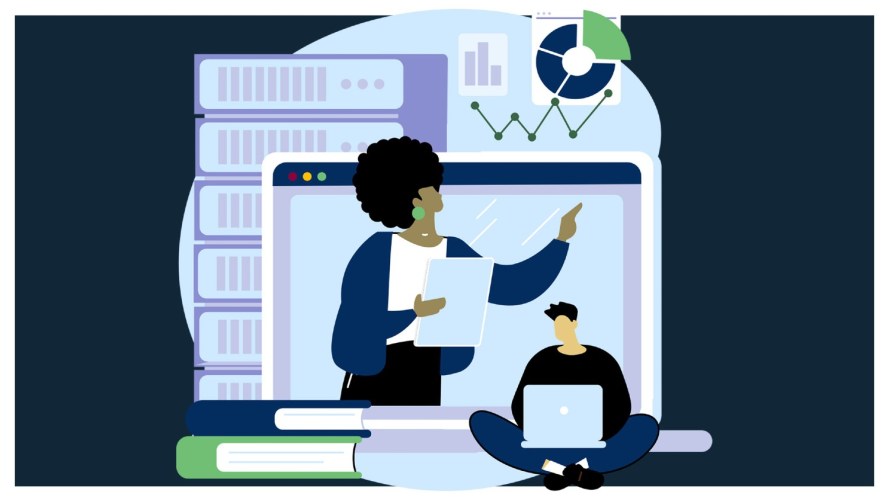Consumers Say They Will Trade Personal Data For These Benefits



Customers are increasingly hesitant to share personal information. Here are some ways media companies can ease those fears and build a trusting relationship.
Imagine the following: Someone views your website or downloads your app and a pop-up appears saying, “We’d like to track you so we can make your experience better – Yes or No?” In that moment, the person hasn’t experienced anything; they just got there. They can’t value a good experience because they haven’t had any experience yet.
Yet regulations such as Europe’s General Data Protection Regulation (GDPR) and industry frameworks such as Apple’s App Tracking Transparency (ATT) require this type of consent. In other cases, companies are trying to do the right thing by seeking permission to use customer data. And the vast majority of consumers – 86% in our latest State of the Connected Customer survey – say they want to know when and how their data is used.
For a publisher or media provider, the result is ever-escalating tension between privacy and personalization: the need to build a rewarding and relevant experience for subscribers in the context of an environment that makes data sharing itself somewhat suspect.
As a result, consumers are continually performing a privacy calculation in their heads where costs and benefits are a bit murky. Do we trade our personal data and submit to tracking to get the content we want? And what do terms like “tracking” even mean?
When it comes to privacy, people are paradoxical. We say one thing and do another; we demand transparency but we don’t read terms and conditions. In our survey, 54% of respondents said they prefer to keep data entirely private. Yet the success of mass personalizers such as Amazon, Alibaba, Netflix and Facebook – platforms that use private data to deliver relevant content – proves that the vast majority of us are perfectly happy to share data at least sometimes.
What’s a publisher or a marketer to do? How can we make the case for opting in?
Solving the Privacy Paradox
The apparent tension between consumers’ penchant for privacy and their actual behavior is called the Privacy Paradox. It turns out, there are a lot of theories about the Privacy Paradox – including one that it doesn’t exist. A detailed overview of the academic literature found 35 explanations packed into 32 different studies.
Here’s what the studies tell us about having a constructive dialogue with customers about the value exchange in marketing:
Provide a sense of control
Like Janet Jackson — to use a reference recognizable to the Brat Pack generation — we really want “Control.”
In the past few years, there has been a dramatic rise in the proportion of people who tell us they feel like they’re losing control. In our survey, the percent of respondents who sensed they lacked control over personal information shot up from 46% in 2019 to 61% in 2020.
An alarming 81% of respondents to a Pew Research survey confessed they felt they had almost “no control” over companies collecting their data. This feeling is particularly acute in the United States. When consumers in the U.S. and the E.U. were asked if they would opt out of data collection in future, U.S. consumers were 1.5 times more likely to say yes.
Why? One likely explanation is that – for all its fits and starts – GDPR provides a sense of control. In America, our hodge-podge of legislation and tools does not. People have been shown to share data much more willingly when they believe they can control what they share.
Explain the benefits of the value exchange in marketing
It’s up to the brand to describe the privacy value exchange in marketing as concretely and positively as possible. The insight here is that well-explained benefits might often outweigh abstract risks – and privacy threats are usually abstract. Stay positive and benefit-focused, since there’s evidence that mentioning risks makes people nervous.
In our survey, people were more likely to say they’d provide some personal information if the value they got in exchange was specific: 51% would do it for discounts, 33% for better content, and 14% for more relevant ads. (Only 27% were not willing to share at all.) The bigger the prize, the clearer the eyes.
The idea is to give the consumer a sense of the awesomeness of your personalized experience, so any data they provide will seem rewarded. In one study, for example, an ad for a rental company using a person’s physical location performed better when it was explained that location data was used specifically to mention services not available elsewhere.
One study found we are much more comfortable with the more direct first-person sharing, which transparently collects customer data, than we are with third-party sharing that tries to covertly track online behavior. The latter, when disclosed, actually drove down purchase interest by 24%. Conversely, using overt data collection methods can restore interest and rebuild trust.
Don’t assume all people are alike
It’s often assumed that attitudes to online privacy are demographically determined. Boomers and Gen X are the cultural paranoids, while Millennials and Gen Z are more relaxed. It turns out these attitudes are more a function of our personalities than our demos: they’re a state of mind.
A study published last year identified about one-third of the online population as “privacy actives,” more informed and aware. Rather than retreating from data sharing, these “actives” were twice as likely to share their purchase history in exchange for better recommendations. While there are many young people in this cohort, age isn’t the determining factor.
So the privacy conversation will be different among different groups, and these groups are likely not segmented by age, gender or income. The “actives” just need more information – the more the better. Those who reject sharing their information need their suspicions allayed. It’s up to the marketer to figure out which segment each consumer inhabits.
Bottom line: In the same way you use data science and predictive models to personalize offers, use these tools to tease out the consumers’ privacy mindset.
And remember, you can always try something new. Ask people to share data after you’ve given them something of value — the heart of the value exchange in marketing. Be explicit. Ask them how they feel. The human rules still apply: Trust is something that is earned, not just given.
Trust is the media industry’s most valuable currency
For media companies to win an increasingly complicated war for attention, they must prove their trustworthiness to their customers and that they’re deserving of consent to leverage their data safely and effectively. Discover what steps can be taken to earn that trust.n




























